
Source: MEMS
Original Author: Yin Fei from MEMS Consulting
Flexible sensors refer to sensors made from flexible materials, which possess good flexibility, ductility, and can even be bent or folded freely, with a variety of structural forms.
With the growing demand for flexible sensors, academia, industry, and other related parties are researching how to leverage nanotechnology to help achieve their goals. Research in this direction is thriving, and many teams have made remarkable achievements.
These advancements will make nanotechnology-based flexible sensors more suitable for modern society, attracting more interest in applying these innovations across various industries.
One of the challenges in developing sensors for products like soft robots and medical devices is the trade-off in pressure sensitivity. A research team in Texas has made groundbreaking progress in overcoming this obstacle.
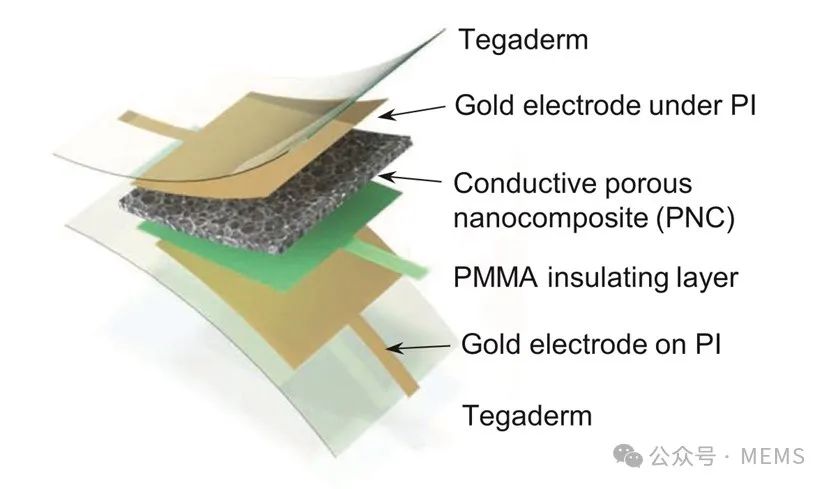 Schematic diagram of the hybrid response pressure sensor structure
The research team constructed a hybrid response pressure sensor capable of non-invasively measuring pulse waves from the skin surface. They explained how traditional capacitive sensors typically rely on piezoresistive and capacitive mechanisms, using dielectric materials to detect pressure.
In their latest research, they replaced the dielectric materials with high-resistance conductive porous nanocomposites (PNC) for pressure sensing. PNC changes resistance and capacitance under pressure. By adopting PNC, their sensor sensitivity increased fourfold (over 20 kilopascals). They are also researching electronic tattoos that can digitize the human body. Moreover, researchers believe the newly developed sensors can also be applied to soft robots, bending flexibly with any movement of the robot.
The applications of robots are continuously expanding, with recent innovations including using sensors to detect buried objects or allowing humans to touch insects with miniature robotic fingers. The flexible pressure sensors developed by this research team will undoubtedly excel in these applications.
The industry has long been interested in human monitoring sensors, which can help doctors better understand what happens during patient consultations. Among these, remote monitoring is particularly important, as telemedicine has become crucial in improving healthcare services.
Europe’s largest telemedicine research project includes over 150,000 patients, providing valuable insights for tracking trends. One major conclusion is that telemedicine helps improve care outcomes. For example, patients receiving telemedicine had four times better adherence in treating bloodstream infections. Sensors provide the real-time insights needed for telemedicine practitioners and others to make correct care decisions without needing to visit patients in person.
A research team in Ireland developed a flexible graphene sensor. Their research created a cost-effective nanocomposite strain sensor capable of measuring pulse rates or patients’ swallowing abilities. The strain detection capability of these printed sensors exceeds industry standards by 50 times. They can also be integrated into widely used medical products like flexible bandages.
Schematic diagram of the hybrid response pressure sensor structure
The research team constructed a hybrid response pressure sensor capable of non-invasively measuring pulse waves from the skin surface. They explained how traditional capacitive sensors typically rely on piezoresistive and capacitive mechanisms, using dielectric materials to detect pressure.
In their latest research, they replaced the dielectric materials with high-resistance conductive porous nanocomposites (PNC) for pressure sensing. PNC changes resistance and capacitance under pressure. By adopting PNC, their sensor sensitivity increased fourfold (over 20 kilopascals). They are also researching electronic tattoos that can digitize the human body. Moreover, researchers believe the newly developed sensors can also be applied to soft robots, bending flexibly with any movement of the robot.
The applications of robots are continuously expanding, with recent innovations including using sensors to detect buried objects or allowing humans to touch insects with miniature robotic fingers. The flexible pressure sensors developed by this research team will undoubtedly excel in these applications.
The industry has long been interested in human monitoring sensors, which can help doctors better understand what happens during patient consultations. Among these, remote monitoring is particularly important, as telemedicine has become crucial in improving healthcare services.
Europe’s largest telemedicine research project includes over 150,000 patients, providing valuable insights for tracking trends. One major conclusion is that telemedicine helps improve care outcomes. For example, patients receiving telemedicine had four times better adherence in treating bloodstream infections. Sensors provide the real-time insights needed for telemedicine practitioners and others to make correct care decisions without needing to visit patients in person.
A research team in Ireland developed a flexible graphene sensor. Their research created a cost-effective nanocomposite strain sensor capable of measuring pulse rates or patients’ swallowing abilities. The strain detection capability of these printed sensors exceeds industry standards by 50 times. They can also be integrated into widely used medical products like flexible bandages.
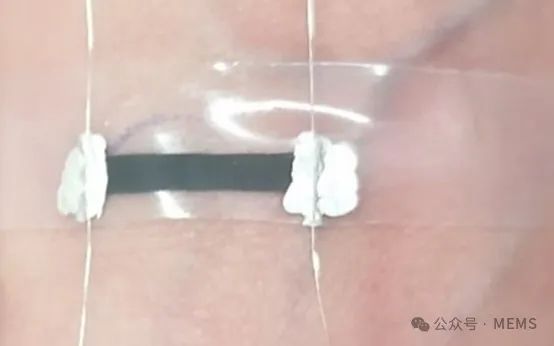 Flexible graphene sensor
The research team stated that they can also fine-tune parameters during the manufacturing process. This increases the application potential and marketability of this technology, providing opportunities for the research team to design sensors that meet precise customer needs. Current feasibility studies involve monitoring joints and gait, detecting early signs of premature labor in pregnant women, and real-time checks of breathing and pulse.
Integrating nanotechnology into flexible sensors is also valuable for monitoring women’s health and fertility. For example, researchers at Caltech created a wearable patch for detecting estrogen levels in sweat. The sensor features inkjet-printed gold nanoparticles and titanium carbide films, along with microfluidic channels. It can track hormone levels during ovulation, which may be ten times higher than other phases of the menstrual cycle.
Flexible graphene sensor
The research team stated that they can also fine-tune parameters during the manufacturing process. This increases the application potential and marketability of this technology, providing opportunities for the research team to design sensors that meet precise customer needs. Current feasibility studies involve monitoring joints and gait, detecting early signs of premature labor in pregnant women, and real-time checks of breathing and pulse.
Integrating nanotechnology into flexible sensors is also valuable for monitoring women’s health and fertility. For example, researchers at Caltech created a wearable patch for detecting estrogen levels in sweat. The sensor features inkjet-printed gold nanoparticles and titanium carbide films, along with microfluidic channels. It can track hormone levels during ovulation, which may be ten times higher than other phases of the menstrual cycle.
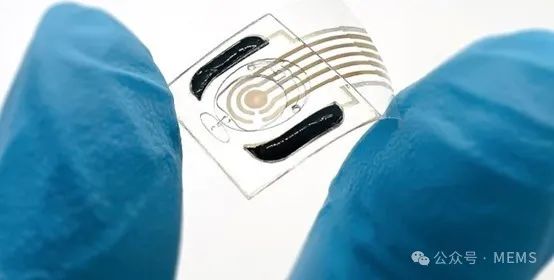 Wearable patch for detecting estrogen levels in sweat
The history of flexible sensors dates back to the early 20th century, and they continue to have a significant impact on our modern lives. For example, such sensing elements play a key role in biometric sensors for new vehicle models. Their flexible characteristics allow for easier installation in more locations. Existing sensors still have room for improvement in many areas, especially those exposed to natural environments.
A collaboration between a German company producing polyurethane and polycarbonate raw materials and a Finnish carbon nanotube developer is a good example. Their collaboration effectively addressed the reliability issues of LiDAR (Light Detection and Ranging) in icy or foggy conditions for autonomous vehicles. They jointly designed a flexible carbon nanotube cover with an integrated film heater to defog and de-ice the LiDAR.
Wearable patch for detecting estrogen levels in sweat
The history of flexible sensors dates back to the early 20th century, and they continue to have a significant impact on our modern lives. For example, such sensing elements play a key role in biometric sensors for new vehicle models. Their flexible characteristics allow for easier installation in more locations. Existing sensors still have room for improvement in many areas, especially those exposed to natural environments.
A collaboration between a German company producing polyurethane and polycarbonate raw materials and a Finnish carbon nanotube developer is a good example. Their collaboration effectively addressed the reliability issues of LiDAR (Light Detection and Ranging) in icy or foggy conditions for autonomous vehicles. They jointly designed a flexible carbon nanotube cover with an integrated film heater to defog and de-ice the LiDAR.
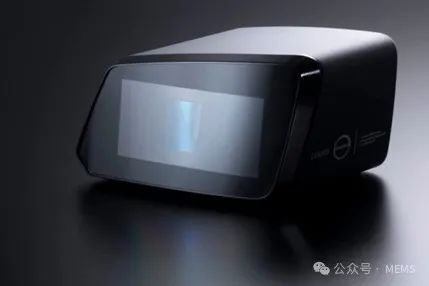 Integrated carbon nanotube heater
The two parties studied energy-saving solutions that can quickly activate and uniformly heat surfaces, without interfering with the laser pulse signals associated with LiDAR.
The research team hopes to use film insert molding technology to customize the heating transparent cover lens into different shapes. They chose polycarbonate as the main material, a flexible alternative to glass. Then, they manufactured a carbon nanotube heater directly on the polycarbonate, achieving a cable-free, integrated solution.
This solution enables LiDAR to operate well in harsh weather, enhancing public confidence in autonomous vehicles. This invention will promote the wider application of autonomous driving technology, as many places around the world frequently encounter icy weather conditions.
Dozens of manufacturers worldwide have already obtained autonomous driving licenses. These licenses allow them to test vehicles equipped with safety drivers. To gain broad recognition from regulators, it is crucial to demonstrate that their vehicles can operate safely in any weather conditions. The solution provided by Canatu and Covestro will help achieve these goals.
Whether in manufacturing plants, hospitals, or other application fields, flexible sensors can help us better control and understand statistics or processes. These cases demonstrate that introducing nanotechnology often yields remarkable effects in such projects.
However, many projects in these fields still focus on pioneering concepts, so the researchers involved need to think outside the box with an open mind and break through the limits of imagination. Additionally, support in funding, technical insights, and other expertise is crucial for overcoming barriers that hinder innovation.
Integrated carbon nanotube heater
The two parties studied energy-saving solutions that can quickly activate and uniformly heat surfaces, without interfering with the laser pulse signals associated with LiDAR.
The research team hopes to use film insert molding technology to customize the heating transparent cover lens into different shapes. They chose polycarbonate as the main material, a flexible alternative to glass. Then, they manufactured a carbon nanotube heater directly on the polycarbonate, achieving a cable-free, integrated solution.
This solution enables LiDAR to operate well in harsh weather, enhancing public confidence in autonomous vehicles. This invention will promote the wider application of autonomous driving technology, as many places around the world frequently encounter icy weather conditions.
Dozens of manufacturers worldwide have already obtained autonomous driving licenses. These licenses allow them to test vehicles equipped with safety drivers. To gain broad recognition from regulators, it is crucial to demonstrate that their vehicles can operate safely in any weather conditions. The solution provided by Canatu and Covestro will help achieve these goals.
Whether in manufacturing plants, hospitals, or other application fields, flexible sensors can help us better control and understand statistics or processes. These cases demonstrate that introducing nanotechnology often yields remarkable effects in such projects.
However, many projects in these fields still focus on pioneering concepts, so the researchers involved need to think outside the box with an open mind and break through the limits of imagination. Additionally, support in funding, technical insights, and other expertise is crucial for overcoming barriers that hinder innovation.
END
Reproduced content only represents the author’s views
Does not represent the position of the Semiconductor Institute of the Chinese Academy of Sciences
Editor: Renowned Weitian Student
Editor-in-charge: Three Dollar Fish
Submission Email: [email protected]
1. The Semiconductor Institute has made progress in the research of bionic covering-type neuron models and learning methods
2. The Semiconductor Institute has made significant progress in inverted structure perovskite solar cells
3. Why does the chip use copper as the interconnect metal?
4. What exactly is 7nm in chips?
5. Silicon-based integrated optical quantum chip technology
6. How anomalous is the quantum anomalous Hall effect? It may bring about the next revolution in information technology!
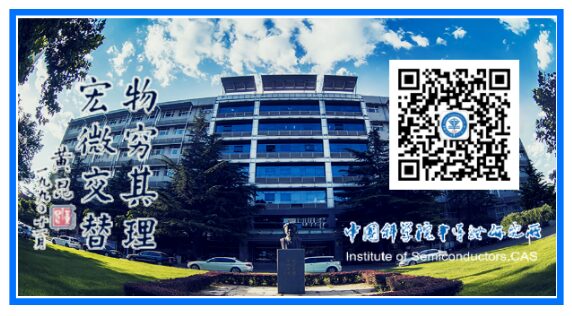

 Schematic diagram of the hybrid response pressure sensor structure
Schematic diagram of the hybrid response pressure sensor structure Flexible graphene sensor
Flexible graphene sensor Wearable patch for detecting estrogen levels in sweat
Wearable patch for detecting estrogen levels in sweat Integrated carbon nanotube heater
Integrated carbon nanotube heater